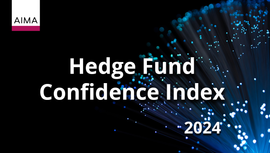Is 2022 the year private debt comes of age?
By Craig Reeves, Prestige Funds
Published: 21 March 2022
As a private debt fund manager, we see some major themes emerging this year which will contribute to the further growth of this asset class. But beyond that, they will raise some big questions for the wider hedge funds industry to answer. While the attraction of private debt for investors looks set to increase in 2022, there are big challenges ahead that the wider fund management industry will need to get to grips with.
Inflation
Inflation will remain a major point of concern for investors this year: US inflation has just hit a 40 year high. What does this all mean for public markets versus private alternatives? Inflation has never been good news for equities. It is highly unlikely that every listed company out there will be able to pass inflation costs on to their end customers. Many will, but many will struggle. This will eat into margins and slow or even stop earnings growth.
This year looks like it is setting up to be another tough one economically. While the global economy has started to recover from the pandemic, some sectors are still in pieces and various areas of the supply chain remain constrained. Ahead of them now is a challenging inflationary environment and we can anticipate more volatility across markets, including in the government bond markets.
From an economic perspective, we have shifted from literally decades with zero inflation to a much higher inflation environment than we have seen in many developed economies since the late 1980s. Macroeconomic factors are at work here, which central banks seem to have underestimated. While we are now in a tightening environment, investors are still facing negative real yields. Therefore, real yields have never been harder to attain consistently and in scale.
Institutional investors are also facing a demographic shift in Europe, which, despite immigration, indicates a population getting older all the time, and living longer lives. Germany and Italy have two of the fastest ageing populations in the world and this is creating a demand for assets that can still provide a consistent yield profile.
These circumstances are going to combine to create more demand for alternative investments as investors seek to reduce risks and allocate to areas of the economy that are simply less correlated to the public markets.
Commodities crisis
Energy has inevitably moved to the forefront of many investors’ – and households’ – minds over the past few months. It is reinforcing the pressing need for European countries to address the source and nature of their energy supplies.
Geopolitics is playing its own roll in energy costs with Russia continuing to use gas supplies in Europe as a bargaining chip. But beyond that, both oil and gas prices have picked up speed considerably over the winter.
The focus is now very much on our reliance on fossil fuels, and whether there should be other, viable alternatives. We have long been active in the clean energy space, providing private lending facilities for biogas facilities in the UK which now power approximately one million homes. This was well before such projects became ‘trendy’.
Many of our early investors were well ahead of the curve when it came to backing biogas projects, but they could see the impressive sustainability benefits of anaerobic digestion for both waste management and early wins in controlling methane emissions from the UK agriculture sector.
Prestige Funds is now seeing broader interest in the sector from larger fund managers who wish to tap the expertise of our lending teams. What has changed?
There is more of a realisation from asset managers that they should be able to demonstrate how their activity is helping to change the world for the better. This situation will not change, fund managers will be held to account by the newer generation of investors in ways that they simply were not previously.
Biogas is already playing an active role in providing electricity for farms in the UK and sending excess power onto the UK national grid. Unlike wind power and solar, it can run 24/7 – this level of consistency is a major appeal for both investors and power consumers especially since the average yield on some UK wind and solar assets was lower in 2021 compared to 2020.
Clean energy production will require considerable action from the private investment market, including private debt specialists. While the UK is considered one of the leaders in the clean energy sector, much still needs to be done to finance the further expansion of the sector.
Sustainability
Last year’s United Nations COP26 conference seems to have achieved less than many expected, but the pressure is on for fund managers and institutional investors to deliver solutions that meet the already high expectations of stakeholders.
Many of the solutions still seem subject to nationalist politics, yet climate issues aside, the growth in the global population continues apace. Global warming and investor (and stakeholder) concerns over sustainability mean that we face a situation where there is more demand for impact strategies than ever before.
Below is a short analysis of how Prestige Funds’ own lending operations measure up against the common breakdown of responsible investment approaches. We have based this off the template established by the UN Principles for Responsible Investment (UNPRI) in their excellent paper on the topic.1 We think this can be seen as typical of the sort of challenges facing private debt fund managers as they consider the sustainability of their activities.
In our case, we have been lucky in that we have already evolved sophisticated lending operations with the technology to maintain detailed screening criteria as well as a sub-strategy that has already evolved to become a green energy financing business.
Obviously, the private debt sector is much broader and varied than our area of speciality – namely direct lending. Managers of all types of private debt are having to evolve their own criteria for screening their portfolios and engaging with some of the themes outlined above. In the case of direct lending or infrastructure debt, projects can be unique and managers will have to develop their own framework for reporting the ESG contribution of that project.
ESG criteria can be embedded in the credit decision making and reporting process. Direct lending fund managers have already evolved sophisticated, technology-driven processes that help them in managing risks and evaluating lending decisions. The companies we engage with are also becoming more aware of their own ESG reporting responsibilities, and as lenders, we are helping to educate businesses about investor expectations in this respect.
| Objective | Key Considerations | Examples | |
|---|---|---|---|
| Negative screening | Excluding sectors and companies from the lending portfolio |
|
|
| Positive screening | Companies or projects that make a positive social / environmental contribution |
|
|
| Thematic | Lending to companies or projects that have demonstrable ability to address specific environmental or social challenges |
|
|
| Impact Investing | Positive environmental / social benefits that can specifically ‘do good’ – intention to do so must be explicit |
|
|
Expansion of the private debt sector
Private debt as an alternative asset class remains in good health and has come through the pandemic with its credentials in better shape than ever. Research group Preqin is forecasting steady growth in unlisted assets, with private debt alone expected to grow by 11.4% per annum between now and 2025.2 This compares with growth in other alternative markets of around 5% per annum.
According to Morgan Stanley,3 even those investors who typically have lower allocations to private assets are upping their stakes at the moment. This is partly being driven by innovation in products, but also by easier access to private funds.
Private debt is ranked just behind private equity as the favoured alternative asset class, having really been considered a niche market 20 years ago. Larger and larger fund raisings have testified to investor demand for this area.
Preqin’s recent forecasts have been supported by extensive polling of investors on their appetite for various asset classes as well as feedback from fund managers themselves.
Dedicated investor allocations to private debt have been on the rise – on average the target allocation is now 6.2%. This compares with 13.8% for private equity and 10.1% for real estate. The overall growth in private debt is being driven by a big expansion in both distressed debt and direct lending strategies. According to Preqin, going into 2021, direct lending formed the largest sub-category within the private debt universe.
Conclusion
Private debt is now set to be a major contributor of capital to the companies and projects that will play an active role in helping to slow and even turn around climate change. The asset class has evolved in the last couple of years to offer investors more specialist options to meet their requirements, including ethical screening and impact criteria. With almost six million companies in the UK almost all of which are privately owned, the private debt industry is increasingly playing an important role in helping to finance them and shape sustainable policies. Furthermore, with high inflation and more volatility now in public markets, these sorts of private assets are enjoying a further surge in popularity.
1 Principles for Responsible Investment: Spotlight on Investment in Private Debt
2 Preqin: Global Private Capital Market Overview
3 Private capital industry soars beyond $7trn (Financial Times, June 2021) - Private capital industry soars beyond $7tn | Financial Times (ft.com)






